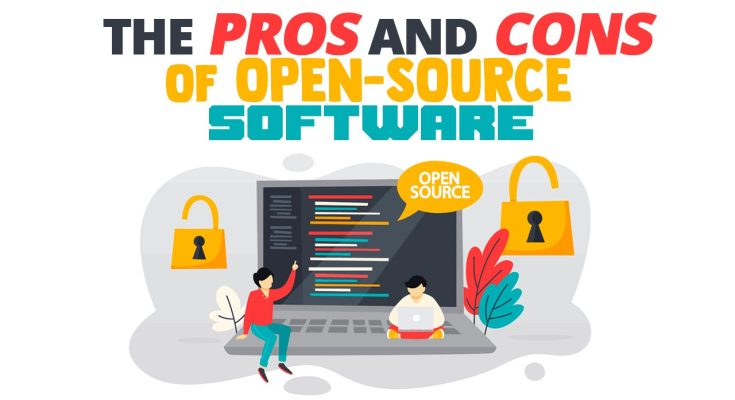In the evolving digital landscape, particularly within the bustling tech hubs of cities like Bangkok, businesses and individual users alike are increasingly confronted with a fundamental choice when it comes to software solutions: proprietary or open-source. For decades, proprietary software, with its licensing fees and vendor-controlled development, dominated the market. However, open-source software (OSS), characterized by its publicly accessible source code and collaborative development model, has steadily gained traction, evolving from a niche alternative to a powerful and ubiquitous force. Understanding the distinct advantages and disadvantages of embracing open-source solutions is crucial for making strategic decisions that impact everything from cost efficiencies to long-term operational resilience.
One of the most compelling advantages of using open-source software lies in its **cost-effectiveness**. Unlike proprietary software, which often comes with hefty upfront licensing fees, recurring subscription costs, and expensive support contracts, OSS is typically free to use. This can translate into significant savings, particularly for startups, small and medium-sized enterprises (SMEs), or organizations with tight budgets. For instance, a nascent e-commerce venture in Thailand could leverage open-source platforms like Magento for their online store and WordPress for their content management system, dramatically reducing initial capital expenditure on software licenses compared to equivalent commercial solutions. While implementation and customization costs still apply, the absence of licensing fees fundamentally shifts the cost structure, allowing businesses to reallocate resources to other critical areas like marketing or talent acquisition.
Beyond the financial savings, **flexibility and customization** represent another powerful pro. With open-source software, the source code is openly available, meaning users and developers can modify, adapt, and extend the software to perfectly suit their specific needs. This level of customization is often impossible with proprietary solutions, which are black boxes controlled by the vendor. Businesses requiring highly specialized functionalities or seeking to integrate various systems seamlessly find OSS incredibly adaptable. Imagine a financial institution needing a bespoke analytics tool; with open-source frameworks like Python’s Pandas or R, their in-house developers could build and tailor a solution precisely to their unique data requirements, rather than being limited by the features of a commercial package. This inherent flexibility fosters innovation and allows organizations to create truly differentiated digital assets.
Furthermore, the **transparency and security** benefits of open-source software are often underestimated. Because the source code is open for anyone to inspect, bugs, vulnerabilities, and malicious code are often identified and patched more quickly by a global community of developers than might occur within a single vendor’s closed environment. This community scrutiny acts as a powerful collective audit, enhancing the overall security posture. While no software is entirely immune to vulnerabilities, the rapid identification and collaborative patching process in open-source projects can be a significant advantage. The transparency also builds trust, as users can verify exactly how the software works and that it doesn’t contain hidden backdoors or data-collection mechanisms. This level of scrutiny stands in contrast to proprietary software, where users must implicitly trust the vendor’s claims about security and functionality.
However, the advantages of open-source software are balanced by certain challenges and considerations. One significant con is the **reliance on community support and potential lack of formal vendor support**. While vibrant open-source communities often provide extensive documentation, forums, and peer-to-peer assistance, there’s typically no dedicated, 24/7 technical support line in the way a commercial software vendor would provide. This can be a significant hurdle for businesses that require guaranteed service level agreements (SLAs) or immediate expert assistance for mission-critical systems. For an SME in Thailand without dedicated IT staff, troubleshooting a complex open-source issue might be challenging and time-consuming, potentially leading to operational delays. While commercial support options for popular open-source products do exist, these often negate some of the initial cost savings.
Another potential drawback is the **learning curve and complexity of implementation**. While some open-source applications are user-friendly, many require a higher degree of technical expertise for initial setup, configuration, and ongoing maintenance. Integrating various open-source components, managing dependencies, and customizing code demands skilled developers and system administrators. This can translate into increased hiring costs or significant training investments for an organization. For example, while Linux is free, deploying and managing a complex Linux server environment often requires more specialized knowledge than simply installing a proprietary operating system like Windows Server, particularly for intricate enterprise-level applications.
Finally, the **long-term viability and fragmentation** of open-source projects can sometimes pose risks. While major projects like Linux, Apache, and MySQL have demonstrated incredible longevity and stability, smaller, less mature open-source projects can be volatile. A project might lose its active contributors, fall into disrepair, or fork into multiple, incompatible versions, making long-term planning and support challenging. Businesses investing heavily in a niche open-source solution might find themselves in a difficult position if the project loses momentum. This necessitates careful due diligence when selecting open-source software, prioritizing projects with active communities, clear roadmaps, and strong governance models to mitigate the risk of abandonment or instability.
In conclusion, the decision to use open-source software is a strategic one that demands a careful weighing of its compelling benefits against its potential challenges. The allure of cost savings, unparalleled flexibility, and enhanced transparency makes OSS a powerful choice for many, fostering innovation and reducing vendor lock-in. However, organizations must also be prepared for potential complexities in support, implementation, and the need for robust internal technical capabilities or specialized external partnerships. For businesses and individuals navigating the digital economy, particularly in dynamic markets, a nuanced understanding of these pros and cons is essential for harnessing the true potential of open-source software while prudently mitigating its inherent risks.




